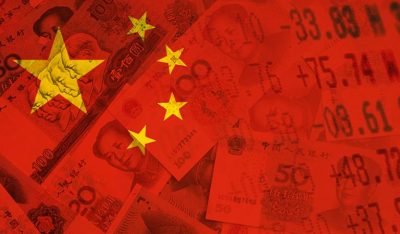By
Aditya Singh
A slowdown is a very natural phase of any business or economic cycle. Cycles are inevitable and this is applicable to China as well as all other economies.
While China’s economic up-cycle was an unprecedented force making it one of the global superpowers, the debt build up during the process is making economists and market observers ‘nervous’, to say the least.
Since the late 80s, China went through rapid industrialization and urbanization. Putting the jargon aside, what this means is they gathered their massive peasant class together (eventually forming massive industrial zones) and gave them capital equipment (technology from the west). The cheap labor pool with much improved productivity fueled China’s export boom.
As part of industrialization and urbanization, China put huge amounts into fixed asset investments. Think of this as infrastructure and real estate. Fixed asset investments have been productive in the early years. Urbanization has driven the need for real estate. Better ports, roads, transport systems, etc, are important to furthering productivity.
The twin engines of export and fixed asset investment drove China’s economic growth for nearly two decades. Its early success eventually drove more capital into export sectors and fixed asset investment (real estate, construction, etc.), much of it funded through debt.
As is the case of human nature and economic cycles, things overshoot. With the low hanging fruits in manufacturing/export wrangled out and obvious infrastructure already built, oversupply/overinvestment became an issue sometime in the middle of the last decade.
The growth, overshoot, slowdown (or perhaps, recession) phases are almost universal. No country can grow in the teens forever, and a slowdown is bound to happen (think about the number of cycles the U.S. has gone through in the last century). But instead of a slowdown, China engaged in a series of policies to extend its economic boom.
The faith in and legitimacy of the CPC (China Communist Party) rests on the country’s economic strength. The central government will do everything to keep the economy from sputtering. In so doing, I think it made the economy more fragile and the cycle more precarious.
Sometime during 2007 China’s growth slowed rapidly as the U.S. fell apart in the great recession. In order to maintain growth, central government resorted to one of the largest fixed asset investment programs the world has seen (Chinese economic stimulus program).
Local governments pushed real estate and infrastructure development to new heights. Both were highly stimulative to the economy as they were a function of borrowing money from the banks and throwing it at the problem.
One key to understanding this is that the banking system in China is not structured to make commercially viable loans (ie. allocate capital wisely). Banks are state-owned and loans are made largely through relationships or under the direct order of the state.
By around 2011, massive misallocation of capital in infrastructure began to surface and unaffordable real estate prices started to create social unrest. The central government started to clamp down on bank lending. However, by then, you have a nation of local government and private/state-owned enterprises addicted to debt. They found new ways to keep borrowing; and banks found new ways to keep lending, directly or indirectly, through China’s rapidly developing shadow banks (local government finance vehicles, trusts, credit guarantee companies, etc.). The central government would turn a blind eye if it kept the economy going. Debt kept piling on.
From 2007 to 2015, China’s debt grew from US$7trn to US$28trn. Debt to GDP is approximated to be a whopping 250-300%. This puts China as one of the most indebted nations in the world. China’s debt is roughly one third of the global GDP.



No Comments Yet!
You can be first to comment this post!